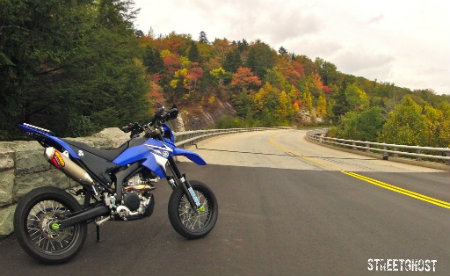The jump you described would be a kicker at any quick speed because the face is shorter than your bike. At a fast clip, it's going to kick the butt of the bike up.
As far as practicing jumping, the best practice jump would be one with a long face and a flat landing, preferably a plateau style. Imagine half of a creek bed, you ride up the side and jump out onto a landing area higher than you started... this makes landings softer and you can get a feel for how you can manipulate the bike with throttle and body positioning. That jump you describe, 12-16 inches tall, is really more of a big bump. I'd first suggest finding a jump with a face as long as your bike.
There are techniques used in motocross to control the pitch of the bike in the air. You can tap a front brake to bring the front end down if it's high, or screw on the throttle to bring the rear down. Gassing the bike off the face will drop the rear and could loop you out. Chopping the throttle off on a sharp lip could kick the rear high. You'll have to learn the terrain to learn when to use and not use throttle. Basically, as explained to me by Steve Wise (google him and motorcycles) the bike has three gyroscopes: the front and rear wheel, and the crankshaft. By manipulating these three things you control the bike. Turning the front wheel in the air does have an effect, as does throttle and braking because of the gyroscopic principals...
That may go a bit too far for this cause.
Start slow on the right jump and just keep making circles until you get the feel of it. My first jump was a large pile of cowpies I hit on my Yamaha Mini Enduro. I was hooked from there... and my boots covered in poop... anyway. There is no ONE way of doing it because there is no ONE jump. Like life, you gather what info you can and improvise. Practice makes info.
